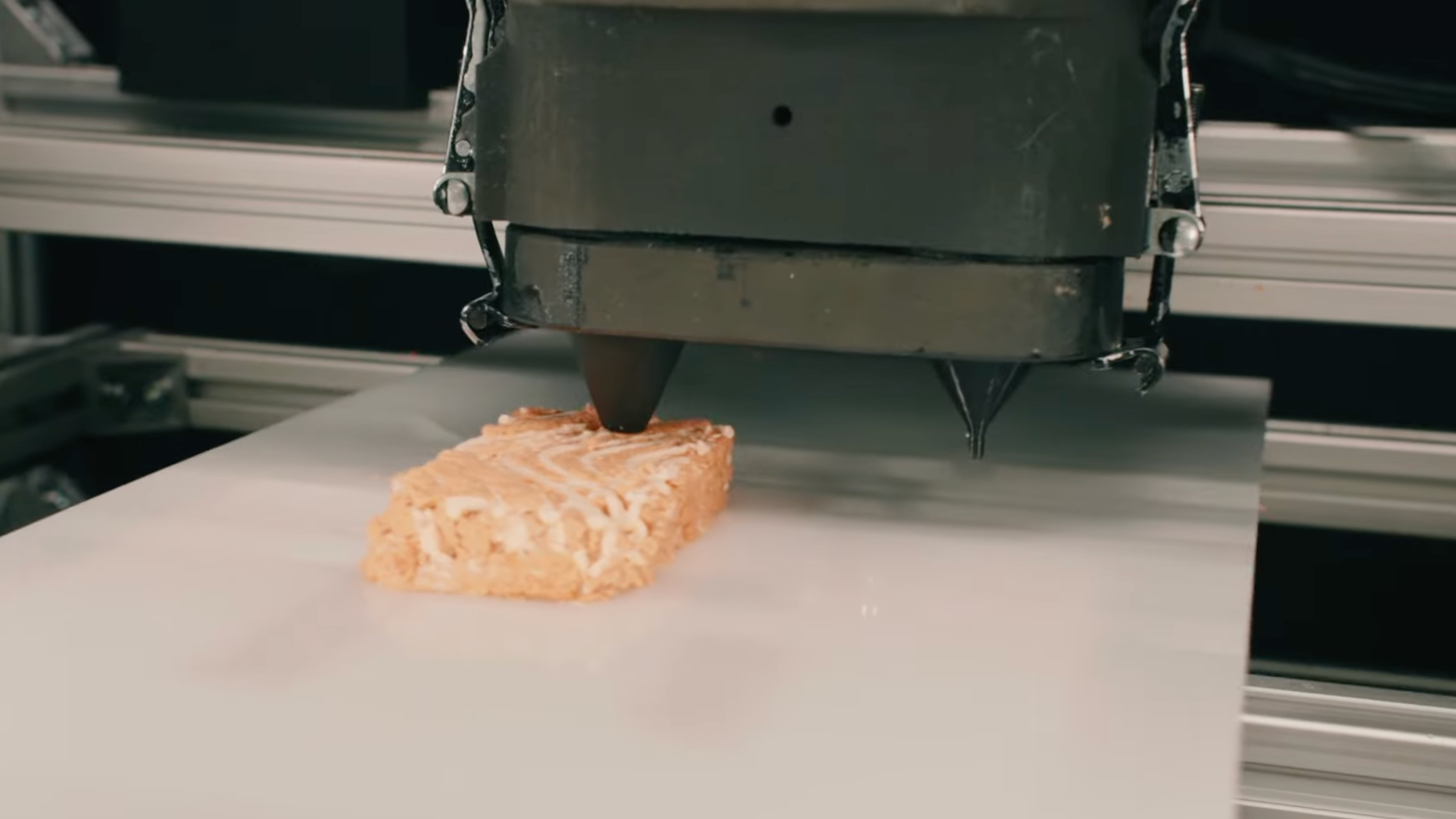You Can Now Eat 3D-Printed Salmon
The latest innovation in vegan seafood is now available in Austria.
The technology driving meat alternatives has come a long way, and that's particularly true in the often overlooked category of vegan seafood. Cell-cultured fish is on the horizon, but in the meantime, big strides have been made with ingredients like mushrooms to mimic the taste and texture of fish. And now, Austrian startup Revo Foods has created what's thought to be the first 3D-printed food product to reach grocery store shelves, IFL Science reports—and it's a vegan version of one of the most widely consumed fish in the world.
3D-printed salmon, explained
Revo Foods' imitation salmon is made of mycoprotein, which comes from the mycelium of fungi, or the filament-like foundation of mushrooms that grows beneath the soil. This ingredient is the same one that comprises the vegan sushi we tasted earlier this year from a company called Aqua Cultured Foods based in Chicago.
Revo Foods partnered with a company called Mycorena, and the pair were able to figure out how to engineer mycoprotein that could be processed through a 3D printer. The product is simply called The Filet, and Designboom notes that it contains all nine essential amino acids; Vitamins A, B2, B3, B6, B12, and D2; and Omega-3 fatty acids.
A promotional video on YouTube briefly shows how the vegan salmon is printed using the 3D printer. If you watch carefully, you can see that the machine also includes white striations that look like the fat from actual salmon.
Where to buy 3D printed vegan salmon
Right now the product is only available in Vienna at select BILLA grocery store locations. Starting on October 1, The Filet will also be available for purchase online for customers across Europe. Other products already available from Revo Foods include imitation gravlax and vegan fish spreads.
So no, American shoppers, there's no availability in the U.S. just yet, though Popular Science reports that the company is aiming for a 2025 market entrance Stateside. At this rate, we're about to see a big boom of innovative new meat substitutes—it's just a matter of which ones stick around, and which ones don't.
